Disclosure: Meeple Mountain received a free copy of this product in exchange for an honest, unbiased review. This review is not intended to be an endorsement.
11:57
I cannot stand the social deduction game Werewolf, nor its dominant variant One Night Ultimate Werewolf. In both, players are assigned secret roles as the denizens of the unfortunate village where the events take place. Perhaps you will be the Troublemaker, swapping player roles while others sleep, or the Insomniac, who wakes up in the middle of the night to check their role. You may well be the werewolf, terrorizing the town and ripping innocents to shreds.
The goal of the game depends on your role, but most of the villagers want to figure out who the werewolf is and execute them. The game alternates between Days, when players discuss and accuse and vote to execute, and Nights, when players close their eyes and specific individuals are prompted to perform actions corresponding to their roles. One player is the Narrator, a thankless position that has been replaced in recent years by an app, who times the Days and leads the other players through the script for the Night phase.
Werewolf is extremely popular, and I’m happy for those who enjoy it. Just don’t make me play. There aren’t many games I would pass up playing so long as I liked the people at the table, but Werewolf is one of the few that qualify. The best way to do well in the game is to lie, or isolate other players. I don’t enjoy doing either of those things. Werewolf has been the dominant social deduction game for so long that I was under the impression that I didn’t like social deduction as a category. My scant encounters with other designs didn’t do much to change my mind about that. Mafia? Meh. Avalon? Ava-long. Coup? More like Coup-dn’t.
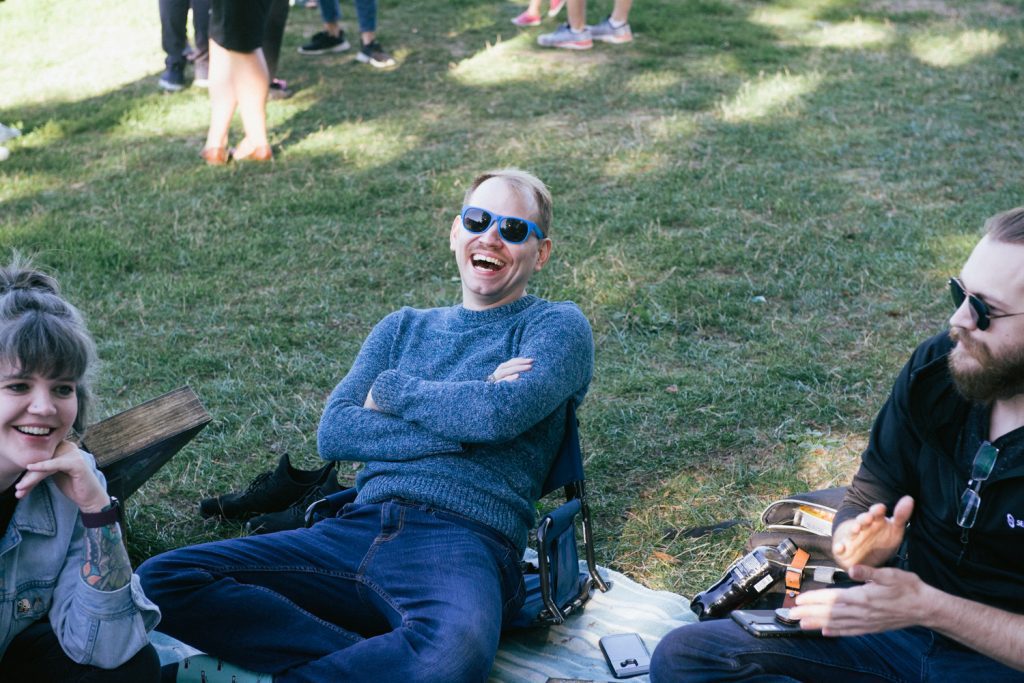
You can understand then why I met the idea of Blood on the Clocktower (BotC), the massive new social deduction game from Steven Medway and The Pandemonium Institute, with skepticism. Maybe “skepticism” isn’t the right word. Hesitance? Wariness. Something in there. BotC is social deduction taken to the practical limits of the form. The fundamental idea is identical to Werewolf. The premise, certainly, will be familiar. A resident of Ravenswood Bluff has been murdered by a Demon, impaled on the hands of the central clocktower. Now the rest of the townsfolk must try to identify the Demon responsible before the Demon and their Minion(s) kill off the town.
Every player gets a secret role with an ability. The game alternates between Days, when players discuss and accuse and vote to execute, and Nights, when players close their eyes and specific individuals are prompted to perform actions corresponding to their roles. One player, the unfortunate horological victim (“gore-ological,” is that anything?), is the Storyteller, who moderates the Day phase and leads the other players through the script for the Night phase.
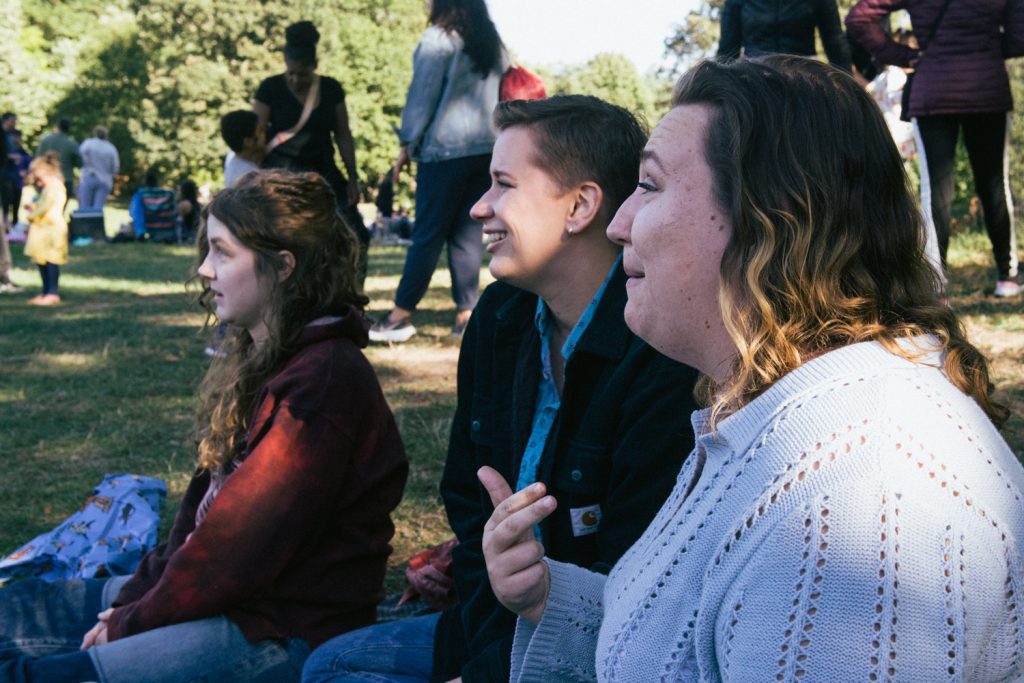
11:58
Here we come to the first way in which BotC is a conscious, massive improvement on Werewolf. You’ll notice that I didn’t describe the Storyteller as “thankless.” While Werewolf’s Narrator has effectively opted not to play the game, the Storyteller is absolutely vital to the experience of BotC. They select the roles that will be in the pool for each game, which have a significant impact on the player experience. Certain combinations of roles create an information rich environment, which leads to boisterous conversations, while other combinations create dense thickets of paranoia and inference, leaving the players to try and work out the truth.

Not only that, the Storyteller has to be creative. Certain conditions in the game can cause player abilities to malfunction, without the players’ knowledge. It is the job of the Storyteller to judiciously take advantage of those opportunities to sow chaos, or cast suspicion, or even try to level the playing field if one side or the other is doing too well. It is less work than being a Dungeon Master in Dungeons & Dragons, but it is analogous in its impact. If you have a bad Storyteller, you’re going to have a less memorable experience.
There are two other ways in which BotC improves directly on Werewolf. The first is that death is not the end. When you die in Werewolf, you sit there. You are no longer allowed to participate in the game. In BotC, you are still a part of the conversation. You even have one final non-corporeal vote you can cast in choosing who to execute during the Days. The vote threshold necessary to execute a player is always half the number of living players left, which means those ghost votes become more and more powerful as the game reaches its conclusion.
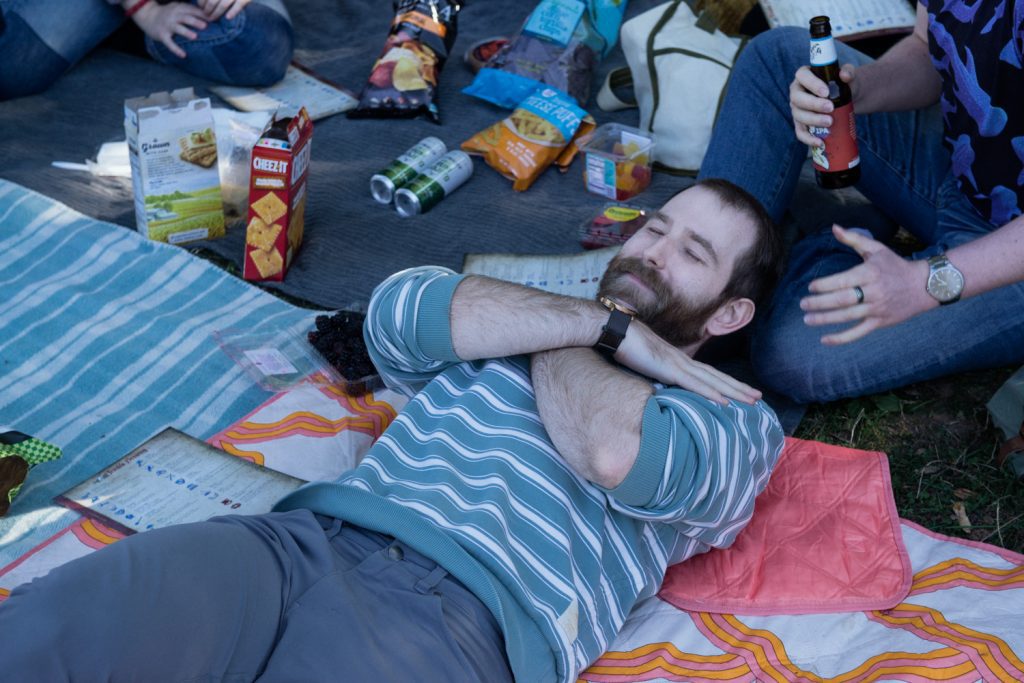
The final crucial difference: BotC gives you as a player interesting powers and actual information to work with. It’s dripped out, round by round, slowly building into a picture that may or may not be coherent, depending on who you believe. This not only enriches the emotional experience of the social interactions, it also invites in players who would otherwise not enjoy such a volatile social environment. I have played BotC with hardcore Euro gamers who loved it. It makes sense. An incomplete picture is much more compelling to try and complete when you can actually see parts of it.
11:59
BotC is a horrifically expensive game, with an MSRP of $150. If you think you will play it, it is entirely worth that cost. I have already played enough games with my copy to get the per-game cost down to about $7.50, a far better cost-to-play ratio than I’ve gotten out of my copies of Carnegie ($60 and nary a play yet), Tigris & Euphrates ($25 per play at two plays so far), or even Scout ($15 at one play).
It’s also hard to argue that the cost isn’t there in the box. There are three full sets of roles for three different scenarios, together with a fourth set intended for when the player count expands past the recommended max of 16. There are enough guide sheets for every player to have one, regardless of the scenario you play, so they can look over the options and familiarize themselves with the possibilities. There are gorgeously printed manuals for the game as a whole and each scenario individually.
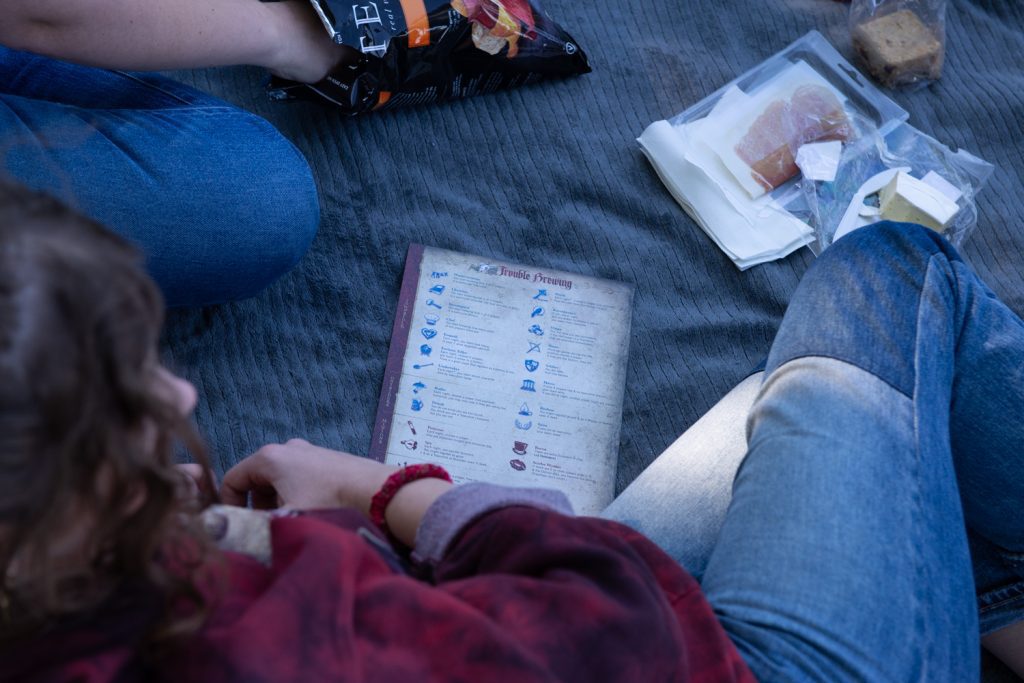
The box itself doubles as the Storyteller’s tome. On one side, you set the player roles in a circle, to keep track of who is whom. The other half is for the Night phase script, which guides the storyteller through waking up various players. The inside of the box and the reverse of every token are lined with felt, to keep things in place as the Storyteller moves about. Every single choice in this box speaks to the thoughtfulness with which the game was produced.
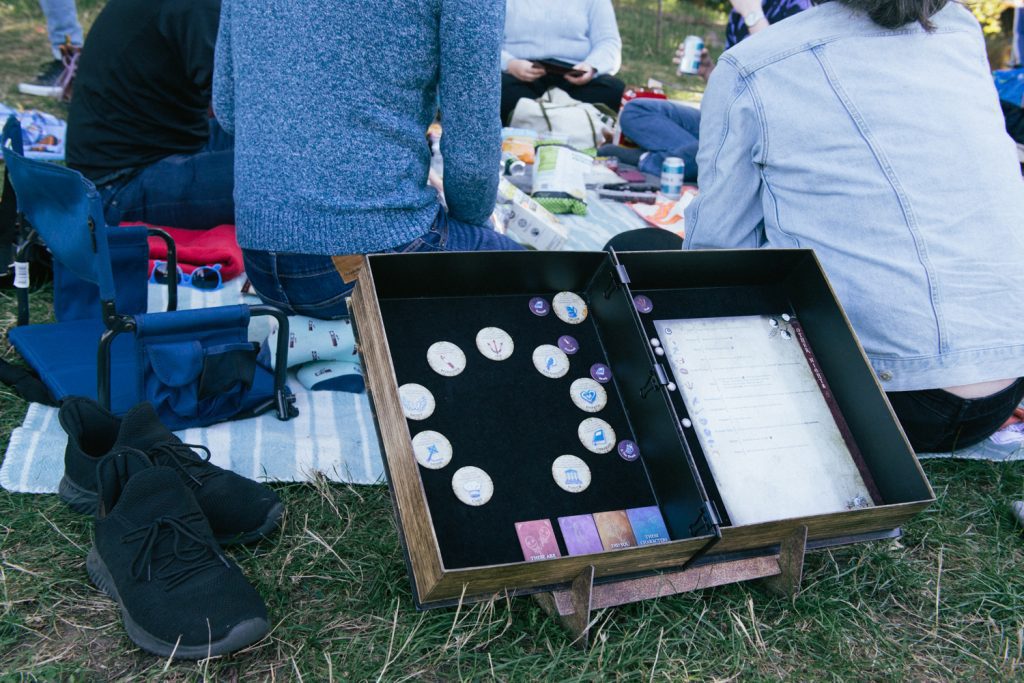
There’s also an absolutely unreal amount of replayability and variability. A skilled and inspired Storyteller can mix and match abilities from across the scenarios, creating custom scripts. It’s almost like the marriage of social deduction with a CCG. What emotional space do you want to create? What interactions between powers do you want to try and explore? There’s already a fairly robust online community around creating new scripts, and they’ve found ones to create ideal role setups for even smaller groups of five or six players, should you be worried about getting enough people together.

12:00
Blood on the Clocktower is one of the most reliably excellent gaming experiences I’ve ever had. I have played seven or eight short, small games in quick succession with a group of 15-year olds, I have played longer games with friends in the park. I have played a game with a large group at a bachelorette party, and I have played with large groups of complete strangers. It has never once been anything less than wonderful.
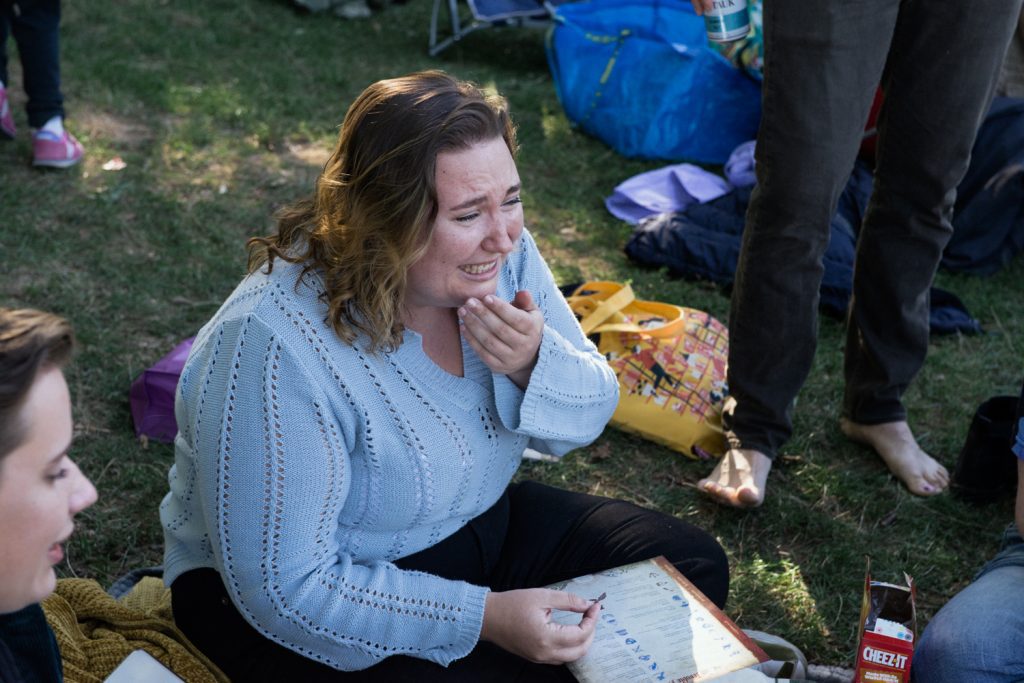 You may have noticed that there aren’t many components in these photographs. That’s because, after setup, they aren’t really a part of the game for anyone other than the storyteller. The game itself completely disappears into the experience of interacting with everyone else. It’s all about the people around you. I love that. It’s magical. All that’s left to see is the shock, the joy, and the laughter. The photographs from this review, taken by my friend Elizabeth Nahum-Albright, are from a single afternoon of playing, but moments like these, expressions like these, have flooded every game I’ve played. Blood on the Clocktower is quite simply a masterpiece.
You may have noticed that there aren’t many components in these photographs. That’s because, after setup, they aren’t really a part of the game for anyone other than the storyteller. The game itself completely disappears into the experience of interacting with everyone else. It’s all about the people around you. I love that. It’s magical. All that’s left to see is the shock, the joy, and the laughter. The photographs from this review, taken by my friend Elizabeth Nahum-Albright, are from a single afternoon of playing, but moments like these, expressions like these, have flooded every game I’ve played. Blood on the Clocktower is quite simply a masterpiece.

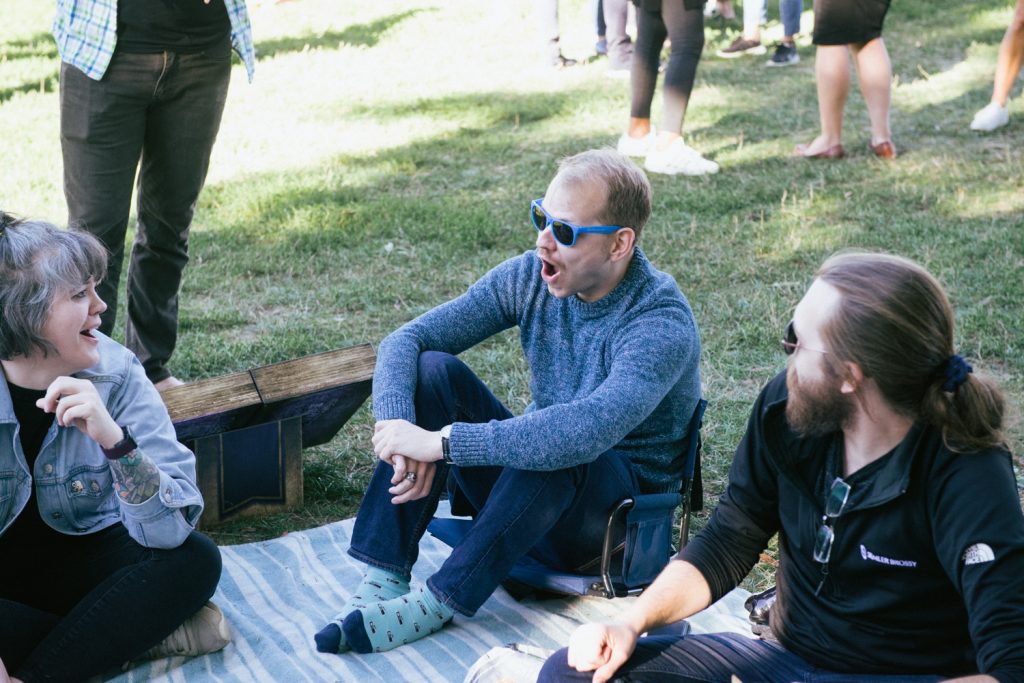


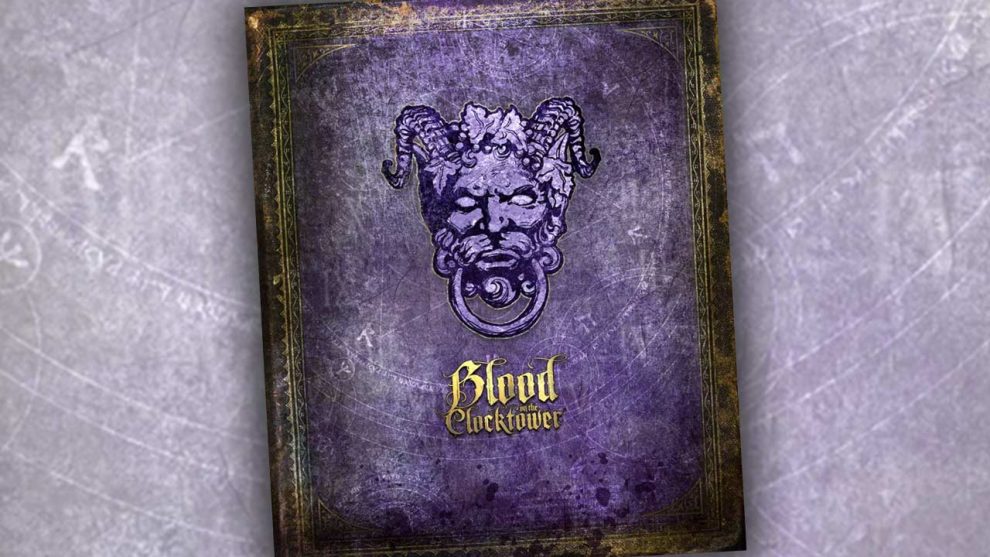
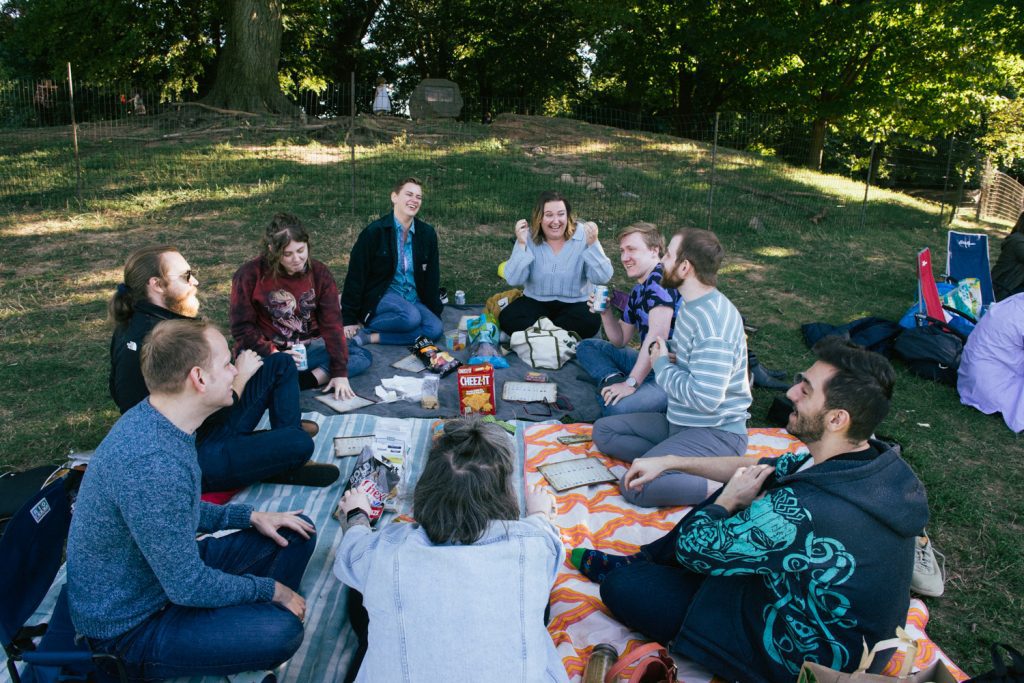
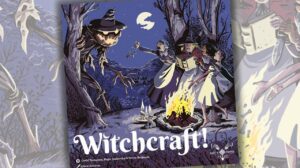







You aren’t wrong. I don’t like Werewolf and this game turned out to be amazing. I have played it at 13 players 4 times now and every experience has been memorable.